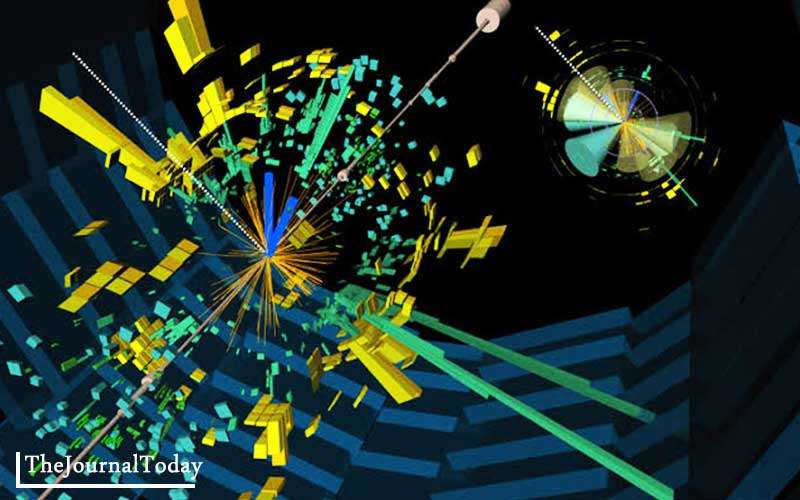Science: The 2010s have been quite a fruitful scientific decade. We expanded our horizon beyond our knowledge of exoplanets, yielding thousands of discoveries and an unparalleled understanding of what’s out there beyond our galaxy. The Planck satellite and large scale structure surveys pinned down more information on dark energy and displayed a conundrum about the expanding Universe.
Three new physics advances will revolutionize science for a decade to come. These three advances hold enormous ramifications for what our future science can do. The discovery of the Higgs boson, the direct detection of gravitational waves, and the first image of a black hole’s event horizon.

Discovering the Higgs boson
The Large Hadron Collider, the most powerful accelerator ever created by humanity, the experiments were constructed with the explicit goal of discovering this particle. This energy – never seen before in terrestrial accelerators by combining it with greater numbers of the proton to proton collisions. The scientists were able to, at last, reveal nature’s most elusive fundamental particle.
The scientists had already discovered and measured the properties of all of the gauge bosons as well as the W and Z bosons, the gluons, and the photon. The last of the particles remaining was only the Higgs boson, eagerly anticipated by the Standard Model.
They were also able to create but detect a measured number of Higgs’ properties:
- Its mass has an equivalent energy of 125-126 GeV
- Its spin is zero, making it the only fundamental scalar particle ever seen
- Higgs boson’s branching ratios show probabilistically likely to decay into various sets of particles
The discovery of Higgs boson has enabled the scientists to compare theory with experiment, and how successful the Standard Model has been in predicting how the Higgs would behave. Group of Scientists plan to run the Large Hadron Collider into the 2030s; the mystery still focuses on the subjective question. Do we require tobuild a superior, next-generation collider to look beyond what the Large Hadron Collider can teach us, a chance to unravel the universe mysteries is at stake.
The direct detection of Gravitational waves
After Einstein put forth the theory of General Relativity in 1915, a whole slew of consequences followed with no sufficient work out within this paradigm of shifting new frameworks. Although, the indirect consequences of gravitational waves appeared in pulsar data long ago. The ultimate goal was to detect these ripples directly.

In 2015, a new generation of gravitational wave detectors came online, spearheaded by the LIGO collaboration an entirely new field was born, “Gravitational-wave astronomy.” For the first time, these ripples left observable and identifiable signals to human-created detectors revealing their existence directly.
Up until very recently, only two types of gravitational waves have already been seen directly. One frequent signal revealing waves from black holes in a mass range, and latter are electromagnetic waves of two neutron stars. In the last four years, studies have shown that Einstein was right, and there’s an entire universe out there to explore beyond the detection of these electromagnetic signals. This decade promises to discover more into gravitational wave astronomy and how far we go with it.
The event horizon of a black hole witnessed directly
The very recent discovery dates back to April of 2019. The image of the supermassive black hole at the center of galaxy Merrier 87 was released. This picture is just the tip of the iceberg; the whole arena of mysteries will unfold in time. It’s an incredible achievement to witness an event horizon for the first time; this also confirms yet another prediction of Einstein’s General Relativity.

The resolution of the Event Horizon Telescope is the equivalent of a single-dish telescope 12,000 kilometers in diameter. The images are shown in April, the 5/6 images of the black hole look similar to one another but different from the remaining 10/11 images demonstrating that the photos are changing over time.
In the very near future, scientists will be able to tease out signals of black hole flares and polarise of that light. But in the more distant future, the scientist will be well equipped to launch radio telescopes into space, syncing them up with their ground-based observatories and extending the baseline of the Event Horizon Telescope to much higher precisions.
As the coming decades unfold the mysteries of the Universe, the scientists won’t simply measure how one or two supermassive black holes evolve but dozens or even hundreds. Stellar-mass black holes may enter the fold as well. The black holes are contained within our galaxy and thus appear relatively large. Also, it’s possible to exhibit radio signatures arrays of black holes with these telescopes.
A clear path is laid out to continue space exploration of the Universe and with these massive discoveries. We’re yet to unravel mysteries, and these discoveries will answer few questions and lead us to the path beyond this galaxy.
